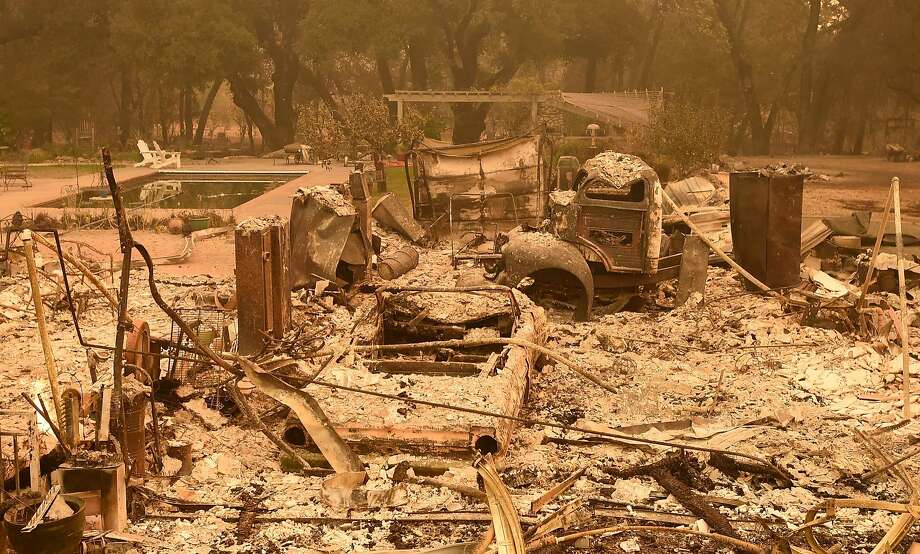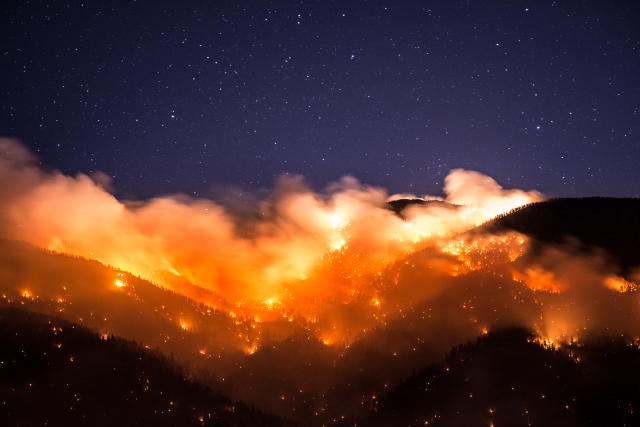ThinkProgress
Trump’s nonsensical comments to Hannity reveal he has no idea how the national debt works
Or he’s willfully trying to confuse the public.
Aaron Rupar October 12, 2017
 CREDIT: SCREENGRAB
CREDIT: SCREENGRAB
During his latest interview with Fox News’ Sean Hannity, President Trump went on a confused rant about the economy, at one point falsely suggesting that stock market gains are helping pay down the national debt.
“I’m so proud of the $5.2 trillion dollars of increase in the stock market,” Trump said, referring to the bull market that began as the economy pulled out of the Great Recession during the months after President Obama took office.
“Now, if you look at the stock market, that’s one element, but then we have many other elements. The country — we took it over, it owed $20 trillion, as you know, the last eight years they borrowed more than it did in the whole history of our country, so they borrowed more than $10 trillion — and yet, we picked up $5.2 trillion in the stock market, possibly picked up the whole things in terms of the first nine months in terms of value.”
“So, you could say in one sense we are really increasing values, and maybe in a sense we are reducing debt,” Trump added, before Hannity quickly moved on to another topic.
But it just doesn’t work like that. As CNBC details, to see why this doesn’t make sense, consider the relationship (or lack thereof) between the stock market and debt during the Obama administration.
“For evidence that the two metrics have little to no bearing on one another, look no further than the eight years of the Obama presidency: Between 2009 and 2017, the S&P 500 returned 235 percent while the national debt soared,” CNBC’s Christina Wilkie writes.
The national debt is a tough topic for Trump these days. Though candidate Trump repeatedly promised to pay down the national debt before the end of his term, it has actually expanded under his watch. And the tax cuts for corporations and the ultra wealthy he’s currently pushing would only make the debt bigger.
As Reuters explains:
The Republican tax plan unveiled last week calls for as much as $6 trillion in tax cuts that would sharply reduce federal revenues. No commensurate spending cuts have been proposed. So, on their own, the tax cuts being sought by Trump would hugely expand the deficit and add to the debt.
Trump’s comments to Hannity were not the first time he’s revealed deep confusion about how the economy works. While he was pushing Obamacare repeal over the summer, Trump did an interview where he indicated he thinks it’s possible to purchase health insurance for $12 annually. During an interview last week, Trump unexpectedly claimed he wants to eliminate Puerto Rico’s $72 billion debt, saying “we’re going to work something out.” But in an indication that the president may not have understood what he was saying, White House budget director Mick Mulvaney quickly walked back Trump’s comments, telling CNN the next morning that “I wouldn’t take it word for word with that.”
White House budget director says Trump promise to eliminate debt was just ‘hyperbole’
Don’t take Trump seriously or literally.
Mulvaney has also walked back Trump’s campaign promises about eliminating the national debt. Asked during a TV interview in April about Trump’s promise to eliminate it by the end of his second term, Mulvaney replied, “It’s fairly safe to assume that was hyperbole.”

 Getty
Getty

 Photo illustration: Yahoo News; photos AP [3], Getty Images.
Photo illustration: Yahoo News; photos AP [3], Getty Images. Photo: JOSH EDELSON, AFP/Getty Images
Photo: JOSH EDELSON, AFP/Getty Images Getty
Getty Getty
Getty Getty
Getty Flames from a massive wildfire burn in Napa, CA. (CREDIT: AP Photo/Rich Pedroncelli)
Flames from a massive wildfire burn in Napa, CA. (CREDIT: AP Photo/Rich Pedroncelli) Credit: CBS This Morning
Credit: CBS This Morning Lake Fire | Big Bear June 2015
Lake Fire | Big Bear June 2015 Source: Landsat 8
Source: Landsat 8 Rain causes nutrients from fertilizers on farmland to run off into rivers.
Rain causes nutrients from fertilizers on farmland to run off into rivers. The nutrients travel along rivers, eventually reaching Lake Erie.
The nutrients travel along rivers, eventually reaching Lake Erie. Source: Aerial Associates Photography, Inc., Zachary Haslick
Source: Aerial Associates Photography, Inc., Zachary Haslick Source: NASA MODIS Note: Only intake points for towns and cities in Ohio are shown.
Source: NASA MODIS Note: Only intake points for towns and cities in Ohio are shown. In this Sept. 20, 2017 photo, a catfish appears on the shoreline in the algae-filled waters at the end of 113th Street in the Point Place section of North Toledo, Ohio. The 2017 algae bloom has stretched along the shores of Ohio, Michigan and Ontario, Canada, and will be among the largest in recent years. The 2015 bloom was the largest on record, covering an area the size of New York City. (Andy Morrison/The Blade via AP) (Associated Press)
In this Sept. 20, 2017 photo, a catfish appears on the shoreline in the algae-filled waters at the end of 113th Street in the Point Place section of North Toledo, Ohio. The 2017 algae bloom has stretched along the shores of Ohio, Michigan and Ontario, Canada, and will be among the largest in recent years. The 2015 bloom was the largest on record, covering an area the size of New York City. (Andy Morrison/The Blade via AP) (Associated Press)